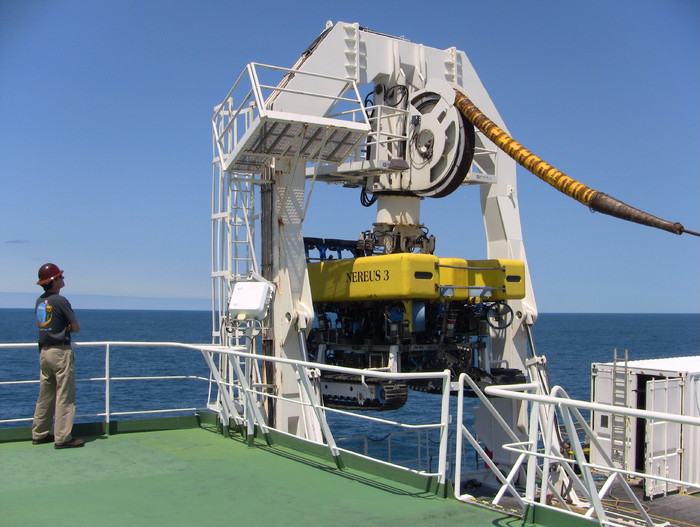Burial of cable Segments 2 and 3, which are connected to Primary Node 1B, is continuing. This work is carried out by the remotely operated vehicle (ROV) Nereus 3 carried onboard the TE SubCom Dependable and is a critical part of installing nodes that are closer to shore. All portions of the cables from shore to a distance of about 1 km seaward of the 700-fathom (4,200-feet) Essential Fish Habitat boundary (EFH) must be buried so as not to be a hazard to fishing activities. After deployment of a node in less than 4200 feet, such as PN1B, the cable segments connected to the node must be reburied. The ROV uses a jetting tool to fluidize soft sediments on the seafloor and dig a trench along the cable route. The trench can be up to 1.5 m deep and allows the cable to be protected from any fishing gear entanglement. For additional protection, the primary nodes deployed in shallow waters above 4,200 feet are encased in Trawl Resistant Frames.
--Cecile Durand, OOI Marine Maintenance Manager, University of Washington, at sea aboard the TESubCom Dependable.

